Macaws are among the most beautiful and colorful parrots in the world. With their vibrant feathers, impressive size, and social nature, they have captured the hearts of bird lovers everywhere. But did you know there are more types of macaws than you might think? In fact, there are around 18 species of macaws, including extinct and critically endangered ones! The exact number will vary, depending on who is classifying them.
These fascinating birds are native to tropical regions of North and South America. Their striking color patterns aren’t just for show; they also help them blend into the lush habitats where they reside. In addition to their aesthetic beauty, macaws are known for their intelligence and strong social bonds. They often mate for life and can even live up to 60 years!
As you learn more about the different types of macaws, you’ll discover the unique characteristics and fascinating behaviors that make each species special. So grab your binoculars, and let us dive into the colorful world of macaws together!
Table of Contents
Understanding Macaws

Macaw: What is it?
A macaw is a type of large, colorful parrot found in tropical North and South America. There are about 18 different species of macaws, some of which are extinct or critically endangered.
Physical Characteristics of Macaws
Macaws are known for their vibrant plumage, displaying a range of colors that vary depending on the species. Their size is equally impressive, with some macaws measuring over three feet in length, including their long tails. Macaws possess a strong, curved beak which allows them to crack open hard nuts and seeds. Another notable feature is their gripping toes, which help them latch onto branches and manipulate objects.
When it comes to the weight of macaws, you’ll find that it varies between species. A macaw’s weight can range from around 1 to 4 pounds.
Behavioral Characteristics of Macaws
Macaws are highly intelligent and social creatures. They tend to be energetic, playful, and affectionate. Many macaw species form strong bonds with their mates and can be pretty sweet and gentle when interacting with them.
Because of their intelligence, macaws have often been referred to as the “gentle giants” of the parrot world. They can learn tricks and even develop a vocabulary if given the opportunity. Their personalities can vary, but many people who have had the chance to interact with them describe them as affectionate, charming, and curious.
Ecological Role of Macaws
Macaws play an essential role in their ecosystems by helping to disperse seeds and maintain plant diversity. Their presence is crucial in maintaining the delicate balance of the rainforest ecosystem where many of them reside. As they forage for food, they inadvertently spread seeds across their habitats, allowing for new plant growth.
Conservation efforts are in place to ensure the future of these beautiful and intelligent birds. Unfortunately, some macaw species are facing endangerment due to habitat loss and poaching. By learning more about macaws and their importance to our world, you can help raise awareness and contribute to their preservation.
Classification of Macaws
Overview of Macaw Classification
Macaws are a group of large, colorful parrots native to tropical regions in North and South America. They are known for their bright colors, long tails, and impressive intelligence. These striking birds belong to the family Psittacidae and can be found in six different genera: Ara, Anodorhynchus, Cyanopsitta, Primolius, Orthopsittaca, and Diopsittaca.
Taxonomy of Macaws
When it comes to classifying the various types of macaws, you’ll find that there are a total of 18 recognized species, including extinct and critically endangered ones. Of course, you will find some variance in the number depending on who is doing the classifications. Here’s a breakdown of the macaws by genus:
- Ara: The most well-known and diverse genus, comprising the iconic Blue-and-yellow Macaw, Scarlet Macaw, and Green-winged Macaw, among others.
- Anodorhynchus: Known for the Hyacinth Macaw, which is the largest flying parrot, and the Lear’s Macaw, which is currently critically endangered.
- Cyanopsitta: Contains only one species, the Spix’s Macaw, which is now extinct in the wild.
- Primolius: Includes smaller macaws, such as the Blue-headed Macaw, Golden-collared Macaw, and the White-eyed Macaw.
- Orthopsittaca: Home to the Red-bellied Macaw, this macaw has a distinctive color pattern and lives in swampy habitats.
- Diopsittaca: Contains just one species, the Red-shouldered Macaw, known for its small size and social nature.
Differences between Macaws and Parrots
Though macaws are a part of the parrot family (Psittacidae), here are some key differences that set them apart from other parrots:
- Size: Macaws are generally larger than most other parrots, with the largest species reaching lengths of up to 100 cm (39 inches).
- Color: Macaws possess vibrant and diverse plumage, often combining several bright colors within a single species.
- Beak: Macaws have large, powerful beaks designed for cracking open hard nuts and seeds, while other parrots may have more specialized beaks for their particular diets.
- Tail: Macaws are known for their long, distinctive tails that can be as long as or longer than their bodies.
- Lifespan: Macaws have relatively long lifespans compared to other parrots, with some species living up to 60 years.
As you can see, macaws are an intriguing and diverse group of birds that, despite being a part of the larger parrot family, have their own unique characteristics and classifications. Dive deeper into the macaw’s world to learn more about these fascinating creatures!
Types of Macaws
Scarlet Macaw
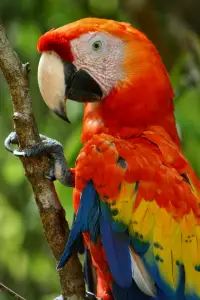
The Scarlet Macaw is a vibrant and colorful species of macaw native to the tropical forests of Central and South America. You can easily recognize these birds by their brilliant red, yellow, and blue feathers. They are known for their pleasant and intelligent nature, making them popular pets among bird enthusiasts.
Blue and Gold Macaw
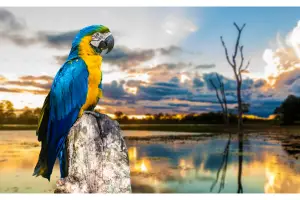
Found in the dense forests of South America, the Blue and Gold Macaw are another large, colorful species with stunning blue and yellow plumage. These macaws are known for their playful and vocal nature and are common in the pet trade. They form strong bonds with their human companions and require a lot of social interaction to stay happy and healthy.
Green-winged Macaw
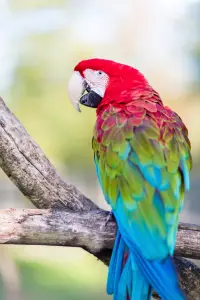
Also known as the Red and Green Macaw, the Green-winged Macaw displays striking red, green, and blue feathers. Native to the forests of South America, they are one of the largest species of macaws. These birds have a gentle and friendly personality, often attracting attention due to their size and vibrant colors.
Hyacinth Macaw
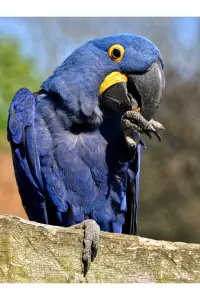
The Hyacinth Macaw, with its vibrant blue feathers, is the largest of all macaws and is native to South America. Their gentle disposition and intelligence make them popular pets, but they’re also endangered in the wild due to habitat loss and illegal pet trade.
Military Macaw
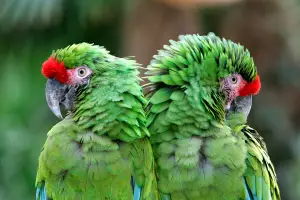
The Military Macaw is a moderately sized macaw native to Central and South America. They are named for their predominantly green plumage, which resembles a military uniform. These intelligent birds are known for their vocalizations and ability to mimic sounds, making them popular pets.
Red-fronted Macaw
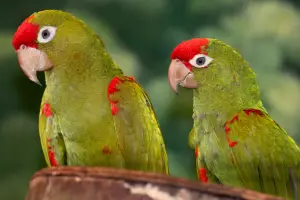
Characterized by its red forehead and green body, the Red-fronted Macaw is native to the dry forests of Bolivia. This endangered species is known for its agility and strong flying ability, making it fascinating to observe in the wild.
Yellow-collared Macaw
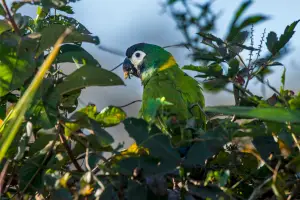
The Yellow-collared Macaw is a small to medium-sized macaw native to South America. This species is easily identifiable, with a green body and a distinct yellow collar around its neck. They are usually found in the wild as pairs or small groups and are known for their curious and active nature.
Red-bellied Macaw
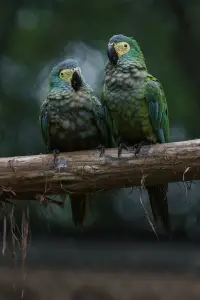
As the name suggests, the Red-bellied Macaw has a reddish belly contrasted by its predominantly green body. Found in tropical South America, this species prefers swampy areas or palm groves. They are social, noisy, and form large groups in the wild.
Blue-throated Macaw

The Blue-throated Macaw is an endangered species native to Bolivia, characterized by its blue throat patch and yellow and blue feathers. Their numbers have diminished significantly due to habitat loss and illegal pet trade, and conservation efforts are currently underway to protect them.
Buffon’s Macaw
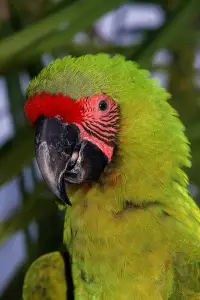
Also known as the Great Green Macaw, Buffon’s Macaw is a large, vibrant green species native to Central and South America. They are threatened by habitat loss and are now considered endangered, with efforts being made to conserve their remaining populations.
Glaucous Macaw
The Glaucous Macaw, with its pale blue-gray feathers, is a critically endangered species. They were once found in South America, but their population has dramatically decreased due to habitat loss and hunting. It is unclear if any individuals still exist in the wild.
Lear’s Macaw
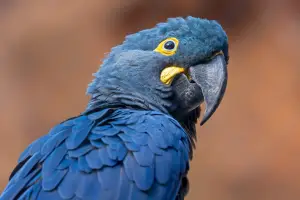
Native to northeastern Brazil, the endangered Lear’s Macaw is characterized by its striking blue feathers. Conservation efforts are in place to protect these birds, as habitat destruction and illegal trading have devastated their population.
Spix’s Macaw
The Spix’s Macaw, also known as the Little Blue Macaw, is a critically endangered species native to Brazil. With a primarily blue body, this small macaw is rarely seen in the wild, and their population has been decimated due to habitat loss and poaching. Extensive conservation programs are being implemented to save this species from extinction.
Great Green Macaw

The Great Green Macaw, found in South America, is another large and vibrant green species. They have a distinctive red forehead patch, and their numbers have decreased due to habitat loss and the pet trade, resulting in endangered status.
Golden-collared Macaw

The Golden-collared Macaw, also known as the Yellow-collared Macaw, has a green body with a distinctive golden collar. These small, social macaws have an active and curious disposition. They are native to South America and prefer swampy areas or palm groves.
Illiger’s Macaw
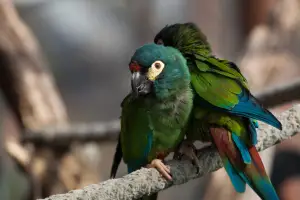
A medium-sized macaw, the Illiger’s Macaw has green and blue feathers with red patches on their forehead and wings. Native to South America, they are known for their playful and intelligent nature, making them popular pets.
Hahn’s Macaw
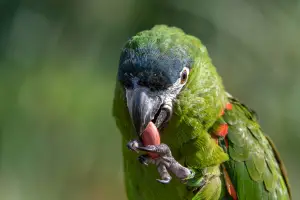
Hahn’s macaw is the smallest of all macaw species, with predominantly green plumage and small red patches on their wings. They are native to South America and are known for their friendly nature and adaptability, making them popular pets among bird lovers.
Maracana Macaw
The Maracana Macaw, also known as the Red-shouldered Macaw, is a small species found in South America. They have a primarily green body with red patches on their shoulders and wings. These little macaws are often seen in pairs or small family groups in the wild.
Each macaw species is unique in appearance, behavior, and habitat preferences. While some are thriving, many face habitat loss, illegal pet trade, and hunting challenges, stressing the importance of conservation efforts to protect these colorful and intelligent birds.
Distribution of Macaws
The Global Distribution of Macaws
Macaws are fascinating and colorful birds that belong to the parrot family, Psittacidae. These large, long-tailed birds are native to tropical regions of North and South America, where they thrive in various habitats. There are about 18 species of macaws, including extinct and critically endangered ones.
Macaws primarily inhabit rainforests, savannas, swamps, and woodland areas in the wild. Some of the notable species you may come across include:
- Ara ararauna: Blue-and-yellow Macaw
- Primolius maracana: Blue-winged Macaw
- Anodorhynchus leari: Lear’s Macaw
- Orthopsittaca manilata: Red-bellied Macaw
The Evolution of Macaws
The evolution of macaws can be traced back millions of years. As a result, they have adapted to a wide range of environments and developed unique characteristics that set them apart from other birds. Macaws, like other parrots, have a strong, curved beak that allows them to crack open seeds and nuts. Their vibrant colors make them visually stunning and help them camouflage themselves in the dense foliage of rainforests.
Flocks of macaws, sometimes called “screeching parties,” can be found socializing and communicating with each other using a range of vocalizations. Moreover, macaws are known to form strong, lifelong bonds with their mates, exhibiting monogamous behavior.
Macaws in Captivity: The Role of Zoos
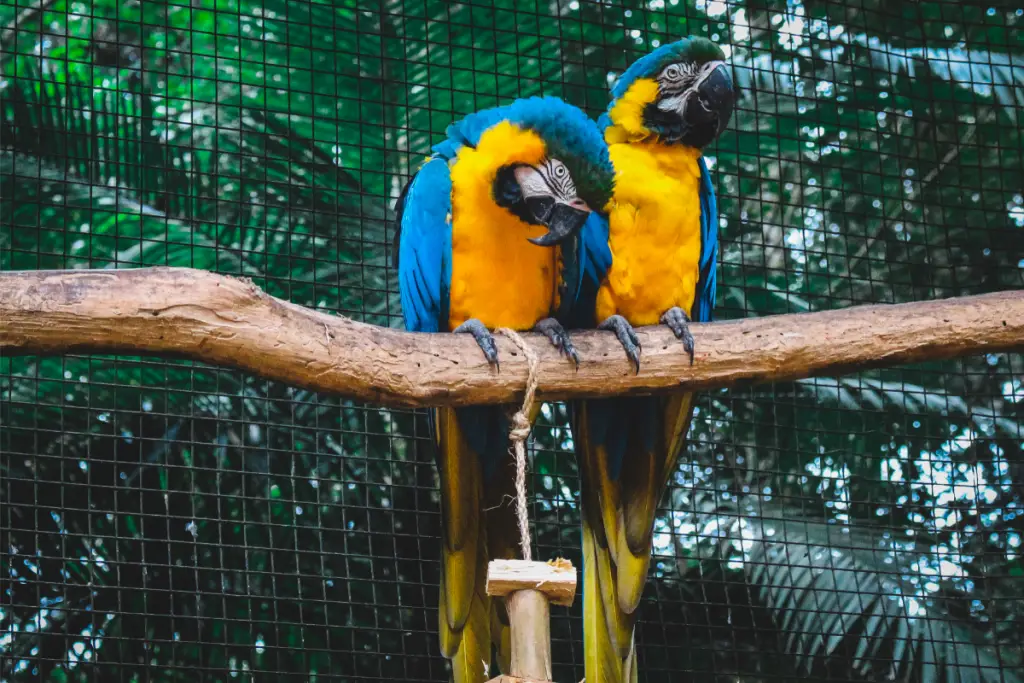
Nowadays, you may also come across macaws in various zoos worldwide. Zoos play a crucial role in conserving these majestic birds by contributing to breeding programs and raising awareness about the threats they face in the wild. Supporting those zoos that provide adequate care and maintain high animal welfare standards is essential.
Given the proper care, macaws can become affectionate companions and live up to 60 years. As macaws are intelligent and sociable creatures, some people may also keep them as pets. However, before considering a macaw as a pet, it’s vital to understand the responsibility, commitment, and resources needed to meet their dietary, social, and emotional needs.
In summary, macaws are a diverse group of parrots with distinct characteristics, making them an exciting subject to explore. These birds can be found in various habitats across North and South America and in captivity in zoos and private homes.
Threats to Macaws
Overview of Macaw Threats
As a lover of beautiful and intelligent macaws, you might be concerned about their well-being. These lively and noisy birds face numerous threats, such as habitat loss, illegal trade, hunting, and persecution. Some species are critically endangered, making efforts to protect and conserve their dwindling populations all the more critical.
Habitat Destruction and Fragmentation
One of the main challenges macaws face is habitat destruction, particularly in the rainforests of South America, where many reside. When their homes are cut down for agriculture, it results in the loss of nesting sites and a reduction in the availability of their preferred food sources. Moreover, habitat fragmentation can lead to isolated populations, which affects long-term genetic diversity and can further contribute to species’ decline.
Illegal Trade
Some macaw species, such as the vibrant Great Green Macaw, have suffered greatly due to the illegal pet trade. Their colorful feathers and impressive intelligence make them appealing companions to many people. Yet, the demand for these exotic pets has led to devastating consequences. As their wild populations plummet, their risk of extinction increases, further jeopardizing their survival.
Hunting and Persecution
Historically, macaws have been hunted for their feathers, which hold cultural significance in various indigenous communities. Moreover, farmers and local residents may view these birds as pests and persecute them when they’re seen as threats to crop production.
In summary, macaws are facing numerous threats that threaten their existence. Habitat loss, illegal trade, hunting, and persecution all take a toll on these fascinating creatures. You can contribute to their conservation by raising awareness about these issues and supporting organizations dedicated to protecting these endangered species.
Conservation of Macaws
Overview of Macaw Conservation
Macaws, known for their beauty, intelligence, and charisma, face numerous threats that impact their populations. There are 18 different species of macaws in the world, and sadly, some of them are either extinct or critically endangered. As a bird lover, you might find it disheartening to know that these brightly colored parrots are struggling to survive due to habitat loss, illegal pet trade, and other human-driven factors.
International and National Legislation
Your passion for safeguarding these beautiful creatures can be channeled into supporting international and national legislation that aims to protect endangered macaw species. Some notable regulations include:
- The Convention on International Trade in Endangered Species of Wild Fauna and Flora (CITES): This treaty ensures that international trade in specimens of wild animals and plants does not threaten their survival.
- The United States Endangered Species Act: This act protects endangered species, including the Glaucous Macaw (Ara glaucogularis) and the Red-fronted Macaw (Ara retrogenes).
Community-Based Conservation
In addition to legal measures, local communities play an essential role in protecting macaws and their habitats. Many communities living near rainforests have taken initiatives to promote conservation education, sustainable tourism, and livelihood opportunities linked to preserving the environment. By supporting these community-based initiatives, you can save the diverse wildlife that thrives in these habitats.
In-Situ and Ex-Situ Conservation Methods
Conservation methods are employed to protect macaw populations, both in-situ (on-site) and ex-situ (off-site). Understanding these strategies can help you appreciate the efforts being undertaken to safeguard these species:
- In-Situ Conservation: This entails protecting macaws and their habitats directly in the wild. Examples include creating protected areas, combating illegal poaching, and implementing reforestation projects.
- Ex-Situ Conservation: This involves conserving macaws outside their natural habitats, such as in zoos, aviaries, or breeding centers. It often includes captive breeding programs, conservation education, and research initiatives.
Together, these conservation efforts help to ensure the survival and long-term prosperity of macaw species, both domestically in the United States and around the world.
Conclusion
The Significance of Macaws
Macaws are truly remarkable creatures that hold a special place in the world of science due to their intelligence, easy-going nature, and ability to form strong bonds. Their powerful beaks allow them to crack open nuts with ease and explore their surroundings tactilely. The loud calls of the severe macaw and other species are a fascinating subject for study, solidifying their status as an essential part of the avian kingdom.
Assembling a diverse vocabulary, just like the blue and white macaw or even some smaller parrots like the cockatiel and budgie, reveals a level of intelligence that continues to impress researchers. Mini macaws and larger species have unique characteristics, offering valuable insights for scientists and bird lovers alike.
The Future of Macaws
It’s difficult not to feel a sense of responsibility for the well-being of macaws. Tragically, some species have already become extinct, like the glaucous macaw and the Spix macaw. Other species, such as Buffon’s macaw, face severe challenges due to habitat loss and the illegal pet trade.
Your awareness of these issues and your support for trusted organizations can make a significant difference in the future of these beautiful parrots. Here’s what you can do:
- Please educate yourself on the different species of macaws and their habitat requirements and vulnerabilities.
- Purchase only ethically sourced birds from reputable pet stores, avoiding contributing to the illegal trade of exotic wild birds.
- Support conservation efforts to protect macaw habitats and promote breeding programs to help maintain healthy populations.
By understanding the significance of macaws and recognizing their threats, you can advocate for their conservation and protection, ensuring that these magnificent creatures continue to grace our skies for generations to come.
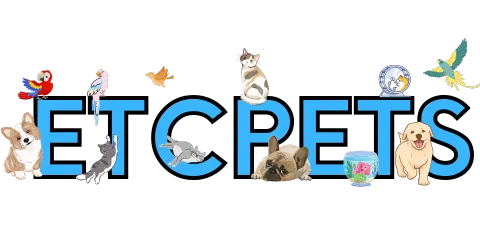
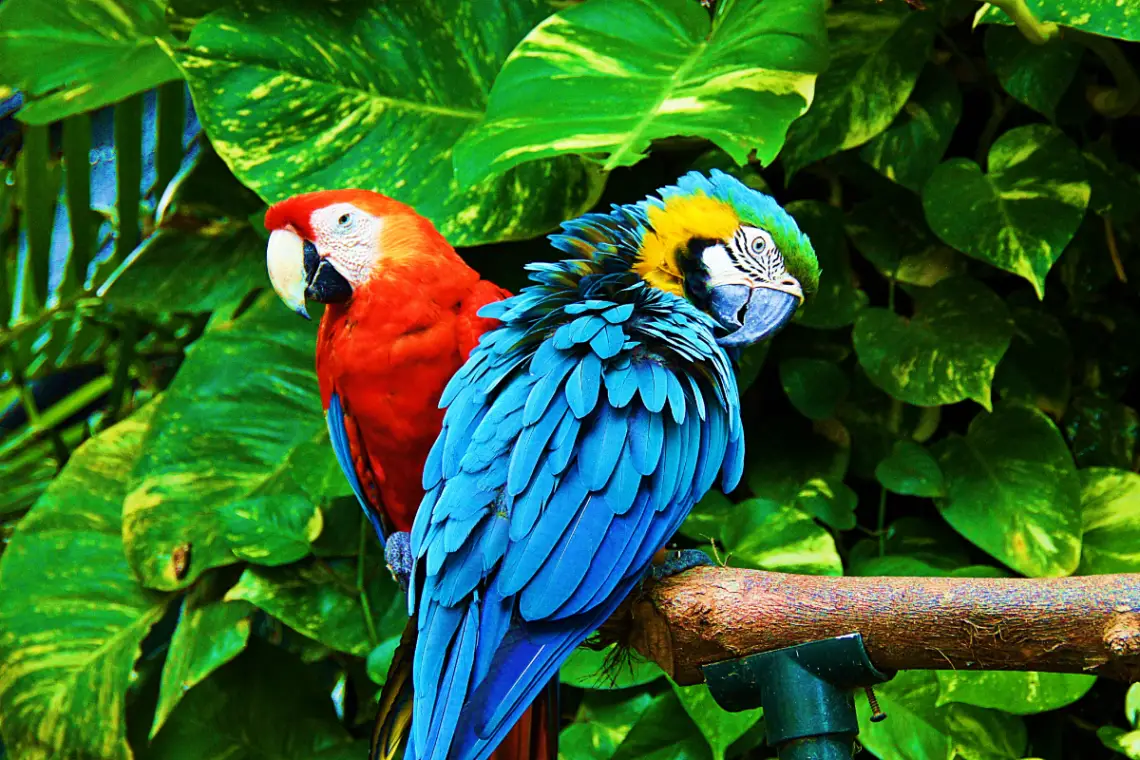
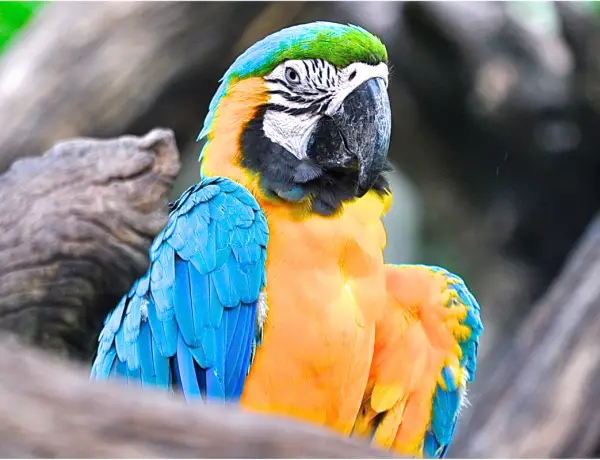
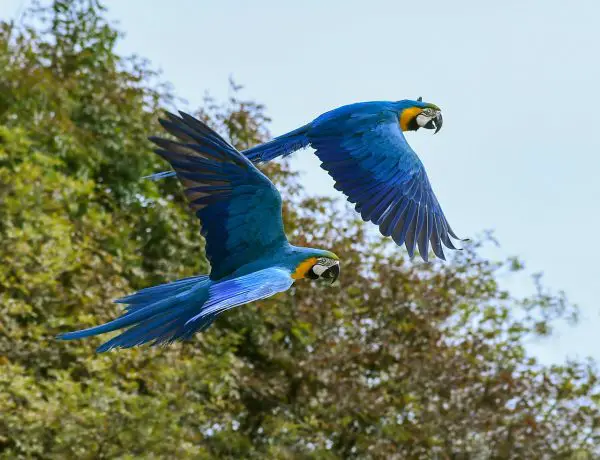
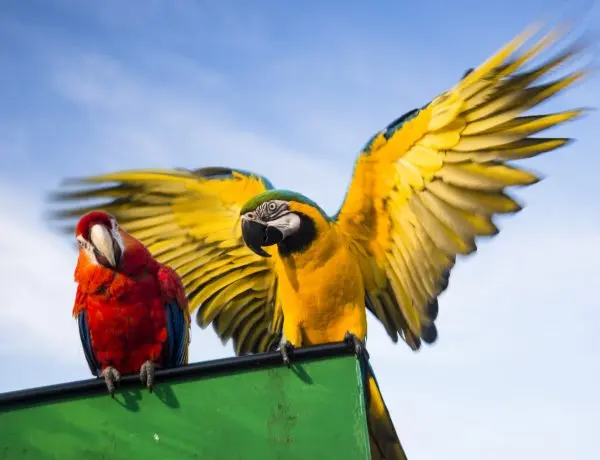
No Comments